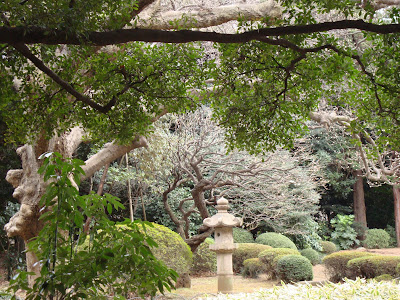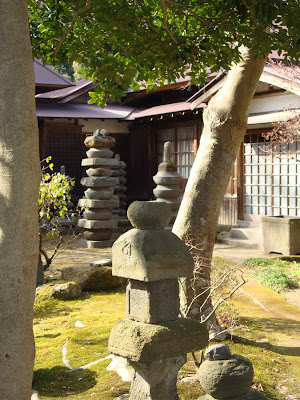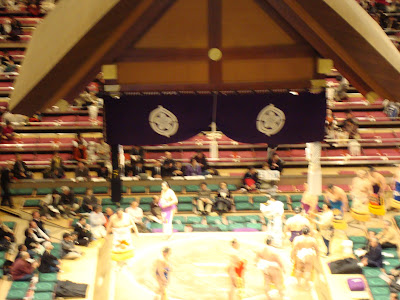Following up on our Thailand Buddha theme, we went to Kamakura last weekend to see one of Japan's Daibutsu (Great Buddhas). Kamakura is a small town near the sea about 50 minutes by train from Tokyo. We enjoyed Kamakura for a number of reasons. It was lovely to be in a town with houses (rather than apartments) with that small town feel to it. Kamakura also has many, many temples that are lovely. For your viewing pleasure, here is Kamakura:
We paid 300 yen to go into this temple complex. Here is Graham looking cute.
Temple building.
One of the Buddha areas.
My boys at the temple.
You will note how much more plain and austere the Japanese temples are in comparison to those of Thailand. Here there is little by way of glitter or glassy glitz. The temples are very quiet, mostly made of wood, and have much more simple decor.
An interesting tree in the Buddha garden. (there are many Buddhas here that people leave coins to--I assume the Buddhas represent different things--like good luck in childbirth Buddha, good luck in life Buddha, teacher Buddha, etc.)
Melinda by the icy pond. It was covered in algae but had a skim of ice on top.
We climbed up to see a "national treasure" at the temple complex. We are still not sure exactly what the national treasure is as we could not read any of the signs. But, it might have been a large bell on top of the hill. This view was our view looking down over part of Kamakura from where we ate lunch. We ate lunch outside at the temple "snack bar." Sam and Sid had red bean soup and tea, Graham and I had mochi stuff and tea and Japanese orange juice. The mochi stuff is cooked rice pounded down into a peanut butter like substance then covered with some sort of rice dust. It was not good. Interestingly, even though it is very cold (frosty here in Japan), the oranges are ripening on the orange trees. These taste a bit like tangerines. The juice is sort of sugar water with some rounds of Japanese orange rind tossed in the bottom.

The Kamakura Daibutsu. He is quite large, made of copper, and has had a rough life. The Buddha was created several hundred years ago and originally was covered. But, the first cover came off (I think that time was a storm), was covered again several times but each time the house was destroyed (earthquake, tidal wave). Yes, the Buddha was washed over by a freak tidal wave at one point and he survived but his house did not. Now, he is no longer covered. For 20 yen (about 30 cents) you can go inside the base of the Buddha. I did not but Sid and the boys did. Evidently there was not much to see and it was dark, but the Buddha earned 60 yen from letting them inside!
Again, notice the material used here--copper--rather than gold or brightly painted wood as the Thai Buddhas were. The Daibutsu is very Japanese.



















































